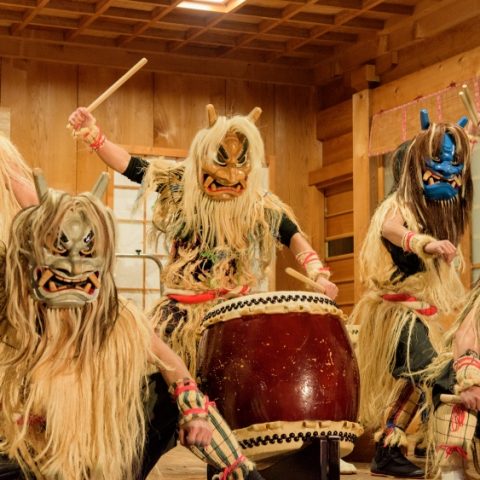
Attention dear travelers, I have some very important news before you set sail to Japan and it involves something vital that you require on your trip: currency. Yes, as of July 3rd, 2024, the Bank of Japan has stated that new banknotes for 1,000 yen, 5,000 yen and 10,000 yen denominations shall be issued. These new designs have been in the making since 2023 and shall contain new security features and historical figures. Even though cashless payments are becoming more popular, locals are still excited to see the revamped notes.
Fun fact: Did you know that the first banknote was issued in 1885? Or how about that the last time Japan’s banknotes were redesigned was way back in 2004?
Let’s jump into the new features, shall we?

Security Features
To combat counterfeiting and increase usability, the new banknotes contain several new security features. They still have the traditional intaglio-printed and watermark portraits but a cool new feature is the 3-D holographic portraits on each of the notes as well as the value of the note and the word “NIPPON”. Just tilt the note at different angles and the holograms will show up! Another cool feature is that the Governor’s seal will appear if you expose the note to ultraviolet light.

The Governor’s seal under UV light, Value of the note and the word “NIPPON” – Photo Credit: Bank of Japan
Design
One design feature is the large Arabic numerals instead of the Japanese Kanji characters to indicate the value of the notes. This will make it easier for travelers to differentiate between the three banknotes. But the highlight of the banknotes has to be the new photos. I may begin going into a little history lesson but bear with me; it will be fun!

Front of the new 10,000 yen banknote Photo Credit: Bank of Japan
The New ¥10,000 Banknote
The “Father of Japanese Capitalism,” Eiichi Shibusawa is featured on the new 10,000 yen note. After the Meiji Restoration, Eiichi Shibusawa introduced Japan to Western Capitalism as well as numerous economic reforms such as modern note-issuing banks, joint-stock corporations, and double-entry accounting. He was also the founder of the first modern bank in Japan, The First National Bank (Dai Ichi Kokuritsu Ginkō) based on joint-stock ownership. This bank had the power to make its own banknotes and by branching out he was able to establish hundreds of joint stock corporations, many of which are still thriving in the Tokyo Stock Exchange today. Other institutes and bodies that were founded by Eiichi Shibusawa include The Japanese Chamber of Commerce and Industry, numerous hospitals, universities such as the first women’s university, a school, the Imperial Hotel in Japan, and even the Japan Red Cross! With a track record like his, no wonder he was chosen as the new face of the rebranded 10,000 yen note.

Back of the new 10,000 yen banknote – Photo Credit: Bank of Japan
That’s not the only change! If you flip the note around, there is a photo of Tokyo Station Marunouchi Building. This iconic red brick building can be found to the west of Tokyo Station and is a landmark of the capital dating back to 1914. In 2003, it was named a National Important Cultural Property.

Front of the new 5,000 yen banknote – Photo Credit: Bank of Japan
The New ¥5,000 Banknote
Umeko Tsuda graces the face of the new ¥5,000 banknotes, the founder of Tsuda University and a renowned educator. In 1871, her father promoted Western education for men and women whilst working on the Hokkaido colonization project under Kuroda Kiyotaka. That same year, at the age of 7, Umeko was one of five women to be sponsored by Kuroda to travel to San Francisco making her one of the first female exchange students from Japan! She continued her journey to Washington D.C. where she pursued her education until the age of 18. On her return to Japan, she became a pioneer and advocate for women’s education, particularly English. Umeko was also the first Japanese woman to have a paper published in a Western academic journal. How exciting is that?
Fun fact: Umeko’s birth name was Ume (which refers to the Japanese plum). In 1902, she changed her name to Umeko.

Back of the new 5,000 yen banknote – Photo Credit: Bank of Japan
Complimenting Umeko Tsuda, the exquisite Japanese Wisteria or fuji can be seen hanging on the back of the banknote. These beloved flowers symbolize good luck, longevity, and kindness as well as having a romantic feeling.

Front of the new 1,000 yen banknote – Photo Credit: Bank of Japan
The New ¥1,000 Banknote
Last but not least, on the new and improved ¥1,000 banknote, we have Shibasaburo Kitasato, founder of Keio University’s medicine department and a bacteriologist. In 1894, he was the co-discoverer of the source of the bubonic plague outbreak in Hong Kong. Six years later, Shibasaburo was a nominee for the first annual Nobel Prize in Physiology or Medicine, though he was not awarded.

Back of the new 1,000 yen banknote – Photo Credit: Bank of Japan
On the back of the revamped banknote, you can find the Great Wave off Kanagawa, Katsushika Hokusai’s iconic ukiyo-e piece which also portrays Mt. Fuji rising on the horizon. It’s truly an exquisite, awe-inspiring piece.

Vending Machines in Tokyo – Photo Credit: Catrina Farrell
Controversies
Now I’m sure you may be wondering “What about the old banknotes?” Well, no need to worry they will still be accepted. In fact, the old banknotes will continue to be legal. Notes that were created as early as 1948 continue to be legal and valid even to this day.
Another concern is being able to use these new notes in an automated machine. The majority of railway stations, banks, supermarkets, and convenience stores have been busy updating their machines to welcome the new banknotes and have completed their changes. Restaurant ticket machines and street vending machines however are a little slower on the updates. A good tip would be to keep some old notes around, hopefully, businesses and the government will give regular updates on the status of the upgrade.
Locals and travelers should also be wary of schemes targeted at giving false pretenses that they will be able to exchange their old bills for new ones via bank transfers. It definitely will be cool to have one or all three of these new banknotes but remember, they’re here to stay. Eventually, they will find themselves in your wallet as well.
So my dearest travelers that concludes my update on recent news in Japan. Be on the lookout for the new banknotes but don’t despair if you don’t come across one, you may very well find them on your next trip to Japan. After all, they say patience is a virtue. Soon, we will all revel in the beauty of these new banknotes. Until next time dearest travelers.
If you want to learn more interesting things about Japanese culture, why not join us on a Green Tea Experience to see how tea has such a significant impact on Japan?



